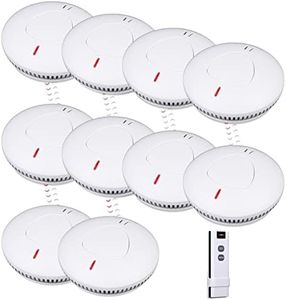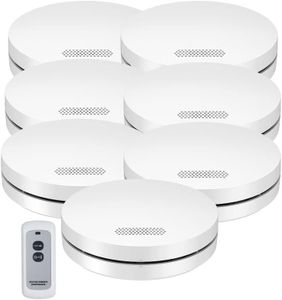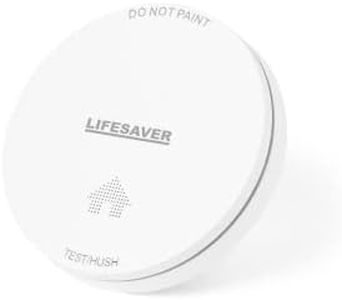We Use CookiesWe use cookies to enhance the security, performance,
functionality and for analytical and promotional activities. By continuing to browse this site you
are agreeing to our privacy policy
10 Best Photoelectric Smoke Alarm
From leading brands and best sellers available on the web.Buying Guide for the Best Photoelectric Smoke Alarm
Choosing the right photoelectric smoke alarm is an important step to keep your home and family safe from fires. Instead of getting overwhelmed by technical details, focus on understanding the features that make a smoke alarm effective, reliable, and easy for you to use. As you evaluate smoke alarms, think about the size and layout of your home, your installation options, and any special needs of your household. By matching the right features to your living situation, you can have confidence you’re making a good choice for safety.Sensor TypeThe sensor type tells you how the smoke alarm detects fire. Photoelectric sensors are particularly good at detecting slow, smoldering fires because they sense tiny smoke particles that may not set off other types of alarms. This spec is important because it impacts how quickly you’re alerted to different kinds of danger. Most modern alarms are either photoelectric or ionization; photoelectric is less likely to trigger false alarms from cooking, making it ideal for living areas near kitchens or bathrooms. Think about where you plan to install the alarm—if you want early warning for smoldering fires, photoelectric is the right choice for bedrooms, hallways, and living rooms.
Power SourceThe power source refers to how your alarm stays powered, which is crucial for its reliability. Smoke alarms may use replaceable batteries, sealed long-life batteries, or be hardwired into your home’s electrical system—with battery backup. Each has advantages: replaceable batteries need regular changing, sealed battery alarms are low-maintenance and last about 10 years, while hardwired models typically require professional installation but offer continuous protection. Consider how comfortable you are with replacing batteries or if you want an option that you install and forget.
InterconnectivityInterconnectivity means whether your smoke alarm can communicate with others in the house. This is important for larger homes or houses with multiple floors, as an interconnected system sounds all alarms if one detects smoke, alerting everyone everywhere. Alarms can be interconnected through wires or wirelessly. If your home is large or you want the highest level of protection, look for models that support interconnectivity—especially if you already have or plan to install more than one alarm.
Test and Silence FeaturesTest and silence features refer to buttons or functions that allow you to check if your alarm is working or silence a false alarm. This is important for ongoing safety and convenience, as you need to know your alarm is functional, and the silence button is handy for quickly stopping nuisance alarms from cooking smoke or steam. Choose a model with easy-to-use buttons and clear instructions, especially if you want straightforward maintenance or have household members who aren’t technical.
Alarm Volume and AlertsAlarm volume measures how loud the alarm is—essential for waking you up at night or alerting you from a distance. Most alarms are around 85 decibels at 10 feet, but some may be louder or have additional features like visual (flashing lights) or voice alerts. Think about sleepers, children, or anyone with hearing loss in your home. If you have a large or multi-story home or need enhanced alerts, choose a unit with robust audible and visual signals.
Lifespan and MaintenanceLifespan refers to how many years the smoke alarm is designed to last before replacement, generally ranging from 7 to 10 years. Maintenance needs like cleaning and battery changes also differ. It’s important because older alarms can become less reliable, and easy maintenance ensures continued protection. Check if the alarm reminds you to replace or clean it and consider your willingness to maintain the device over time.










